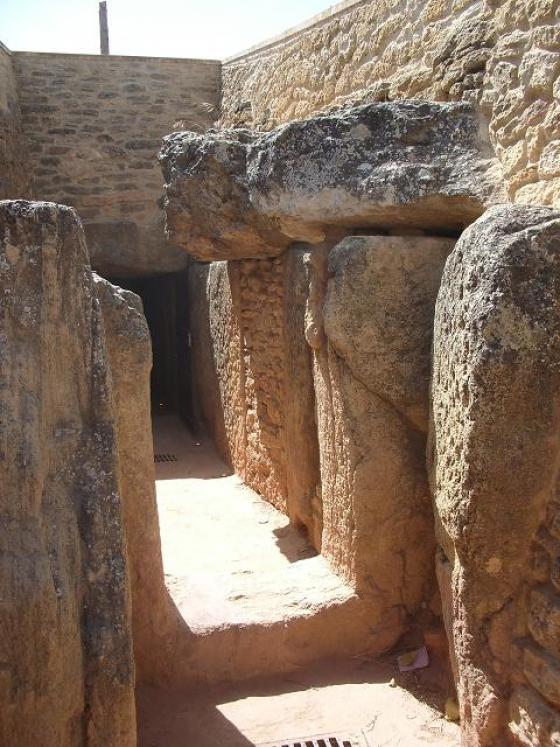
Small basin dug into the rock at the entrance to the dolmen. You can see the Peña de los Enamorados in the background!

Small basin dug into the rock at the entrance to the dolmen. You can see the Peña de los Enamorados in the background!





Very grand and very large entrance to the tomb

For scale, the young man is 2m tall

A particularly good fit

Over the years the site has grown into quite a complex for study and visitors with a museum, study centre and parking for visitors

Rock art within the entrance

View of Los Enamorados from the entrance to Cueva de la Menga, 13th July 2007.

Cueva de la Menga internal photograph. Support mehir with cavity. 13th July 2007.

Cueva de la Menga internal shot showing support menhirs. 13th July 2007.

Cueva de la Menga and Cueva de la Viera are located next to each other on the left hand side of the road as you leave the Northern end of Antequera. There’s a big green sign on the road next to them.
There is a portacabin next to the sites which was manned when I was there. The person provided a leaflet with a map showing how to get to La Cueva de Romeral, which was helpful, as it is not quite so easy to find. They were also giving away some nice free posters when I was there.
Cueva de la Menga is impressive, and has obviously been located with the Los Enamorados hill face in full view of the entrance. Three massive stone menhirs support the roof, of which the centre one features a square cavity.
A significant Bronze Age settlement has been recently discovered a few kilometers north of Cueva de la Menga at the Los Silillos site. It is thought that some of the tools found at Los Silillos may have been employed in constructing dolmen burial mounds at Cueva de la Menga.....Read more about how both sites fit into the regional prehistory.
From ‘The Dublin University Magazine’ v.43 1854 Jan-Jun.
After all our enquiries we were on our way to the ‘Cueva del Mengal,’ the name by which it is known among the people.
.. the fact that no mention of it has hitherto been made in any English work – at least as far as I am aware – induces me to give here a detailed description of its size and proportions, and which I am enabled to do from accurate measurements made on the spot by one of the gentlemen of our party..
I will let you read the extensive description yourself at:
google.co.uk/books?id=_lSWcbO5nMcC&pg=PA41
I thought this was interesting, though:
In length, the cave measures seventy-one feet, and lies due east and west; the entrance faces eastward, and looks towards the two similar [conical] hills; and beyond them again, at almost the distance of a league, rises abruptly from the plain the Pena de los Enamorados, which, from here, presents its most picturesque appearance.
This also caught my eye (it’s rather reminiscent of the current Turbine Hall exhibition at the Tate). Lady Louisa wasn’t amused:
Signor Mitjana [in 1841], in searching for bones, weapons, or other remains, and perhaps, for other chambers deeper in the hill, caused a shaft to be sunk in the interior, between the third pillar and the extremity, but discovered nothing; and to give light to his workmen, broke out at the end a large hole, four or five feet square, which considerably impairs the effect and uniformity of the place. Fortunately, however, it does admit the light, or else a visit to the cave might be attended with dangerous results; for as the shaft is still open, five feet wide, and forty-three feet deep, and the earth loose and sloping at the mouth, an unwary visitor could hardly escape being precipitated into it.



Like all websites everywhere, we use cookies.